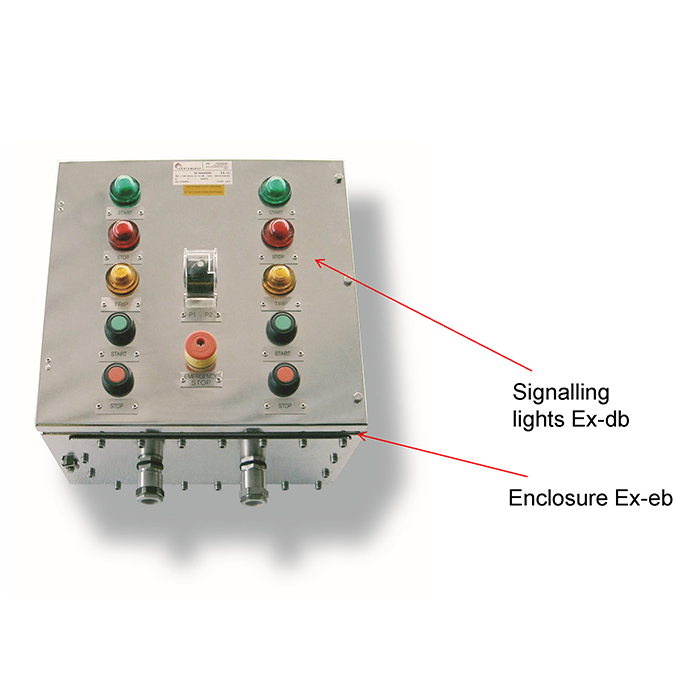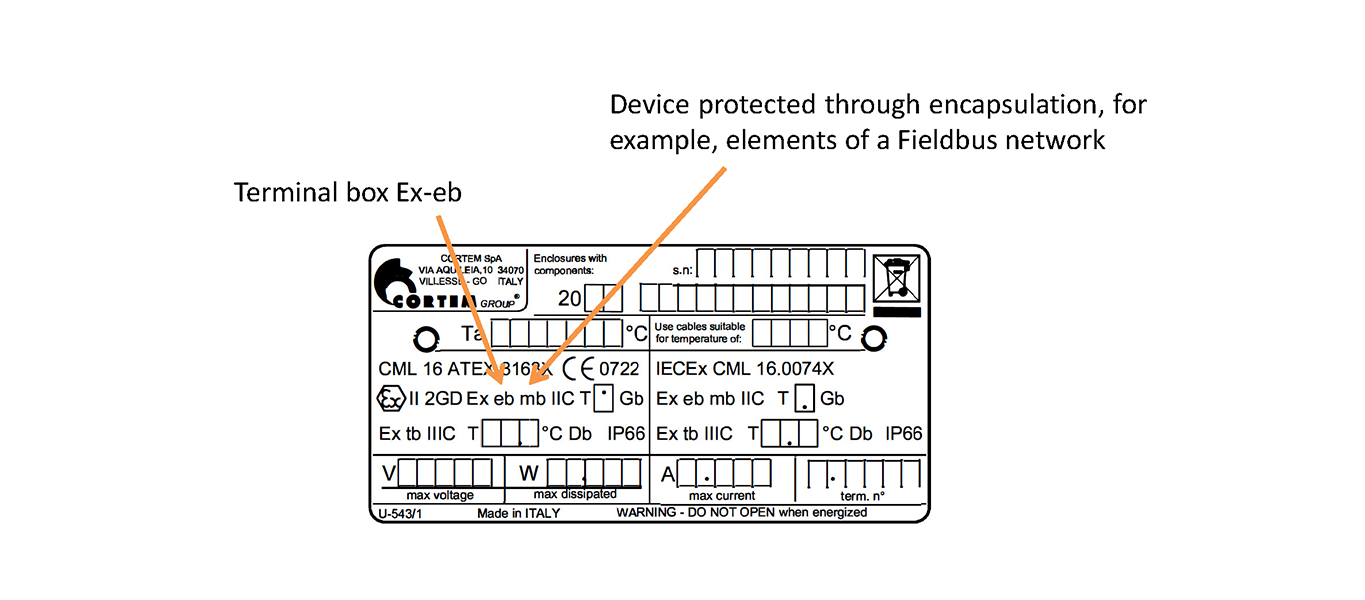The combined Ex methods of protection
Combined protection methods represent a fundamental approach to guarantee the safety of electrical equipment in areas classified for the presence of potentially explosive atmospheres. Their application makes it possible to satisfy different construction and operational needs, combining the advantages of the various protection methods available.
by Andrea Battauz, R&D Manager of Cortem Group
Premise
Since the first attempts to make devices used in mines safe, the safety of electrical equipment in areas classified for the presence of potentially explosive atmospheres has made use of different methods of protection depending on the application. For example, electric motors were made with explosion-proof enclosures, while alarm and communication systems used low voltages, subsequently developing the concept of intrinsically safe protection.

L’insufficienza di un singolo modo di protezione
É chiaro che dispositivi diversi non possono essere realizzati con lo stesso modo di protezione.
Ad esempio, il modo di protezione a sicurezza aumentata ‘Ex e’ è applicabile solo ad apparecchiature o componenti non scintillanti.
Analogamente il modo di protezione ‘Ex m’, essendo il componente elettrico immerso in un getto di resina solida, non è idoneo all'uso per apparecchiature con parti mobili come un albero libero di ruotare. E così per molte altre situazioni, tanto che anche all'interno di una singola apparecchiatura può essere necessario adottare diverse filosofie di protezione degli elementi che la compongono.
Sono stati quindi sviluppati modi di protezione antideflagranti combinati [1] che prevedono l'applicazione di due o più modi di protezione a parti differenti di una stessa apparecchiatura.Un’applicazione tipica dei modi di protezionecombinati sono i quadri a sicurezza aumentata, un esempio dei quali troviamo inFigura 1.

Tutti i componenti sul quadro, come spie, pulsanti e selettori, essendo scintillanti, devono utilizzare un modo di protezione diverso da quello ‘Ex eb’. In questo caso spie e contatti interni sono protetti tramite il modo di protezione a prova di esplosione ‘Ex db’. Un dettaglio di questo lo possiamo apprezzare in Figura 2 dove la marcatura evidenzia che all’interno del selettore è ricavata una camera di esplosione che ospita i contatti

The marking in combined Ex protection methods and of associated equipment
The Standard defines "mode" or "combined protection level" as that of equipment that contains components that use different protection methods. Such a device must show in the marking, or on the plate, the symbols of the protection modes in alphabetical order separated by small spaces. [1]
In Figure 3 we see an application case: the increased safety Ex enclosures are used to install devices in the field that are suitable for the installation zone (for example an ' Ex ec' device in Zone 2 or an ' Ex mb' in Zone 1) providing an IP protection degree to the assembly thus created.
The internal protection methods can be different and, on the plate, following the requirements of EN/IEC 60079/0 [1] standard, they are listed in alphabetical order.
Conclusions
In summary, combined protection methods represent a fundamental approach to guarantee the safety of electrical equipment in areas classified for the presence of potentially explosive atmospheres. Their application makes it possible to satisfy different construction and operational needs, combining the advantages of the various protection methods available.
The correct marking and certification of these devices is essential to ensure that each component functions safely and effectively, preventing explosion risks and ensuring operational continuity in dangerous areas.
The continuous evolution of regulations and protection technologies allows us to face increasingly complex challenges, maintaining high safety standards.
Reference standards and bibliography
[1] EN-60079:2013 par. 29.6